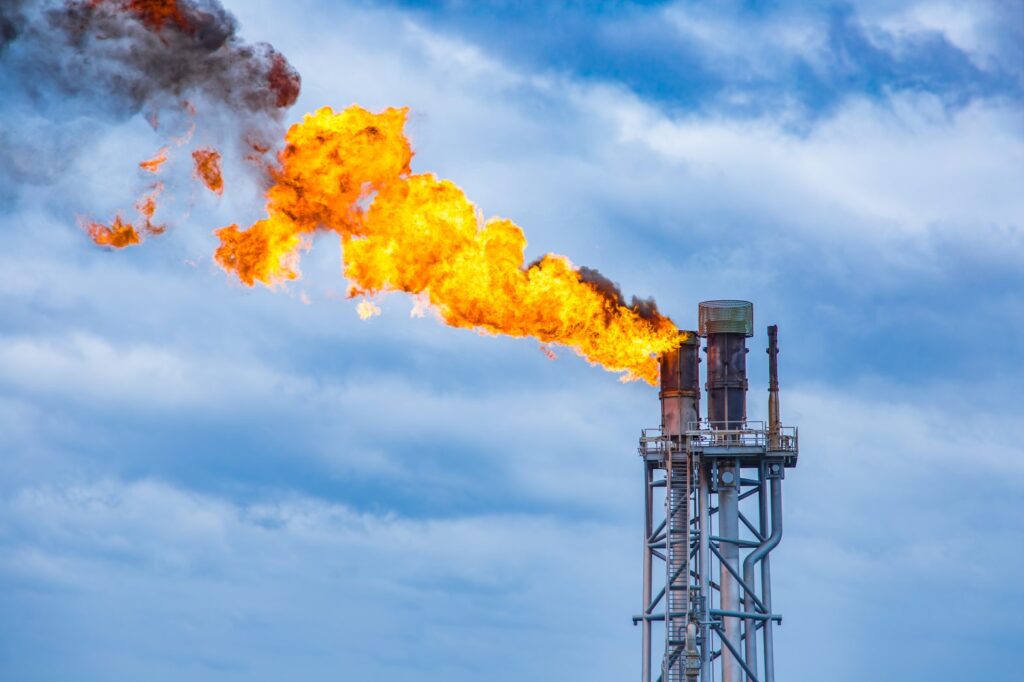
By Patience Chat Moses
As the world turns to adopt new clean sources of energy, recent reports on gas flaring index from the World Bank reveals that gas flaring is still on an increasing level.
New satellite data compiled by the World Bank’s Global Flaring and Methane Reduction (GFMR) Partnership have shown that in 2023, the amount of gas flared worldwide rose by nine billion cubic meters (bcm) to 148 bcm, its highest level since 2019.
According to data collected by Valuechain from the report released on the World Bank website, the increase resulted in an additional 23 million tonnes of carbon dioxide equivalent emissions, an amount similar to adding about five million cars to the roads.
According to the World Bank Global Director for the Energy and Extractives Global Practice, Demetrios Papathanasiou, “Millions of people still lack access to basic energy and greenhouse gas emissions continue to grow, while huge volumes of gas continue to be wastefully flared every year. Capturing and using this wasted gas could displace dirtier energy sources, reduce greenhouse gas emissions, and generate enough power to double the amount of electricity provided in Sub-Saharan Africa.”
Gas flaring releases harmful pollutants, including black carbon and unburnt methane, which contributes to climate change and pose risks to both people and the planet. Experts believe that, eliminating gas flaring would avert at least 381 million tonnes of carbon dioxide equivalent emissions being released into the atmosphere each year. When productively used, wasted flared gas can help displace dirtier energy sources, increase energy access in some of the world’s poorest countries, and provide many countries with much-needed energy security.
“The increase in gas flaring is particularly disheartening as it comes after a long-overdue reduction in 2022. This sets global gas flaring levels back to what we experienced in 2019. We’re hopeful that this is somewhat of an anomaly and the longer-term trend will be dramatic reductions,” Zubin Bamji, World Bank GFMR Manager observed.
As a major oil producing country, Nigeria accounts for a significant percentage of global gas flaring, ranking among the top 10 countries responsible for 75% of global gas flaring. Although the exact percentage of Nigeria’s contribution to global gas flaring is not specified, it is listed amongst other bigger contributors.
Nations like Russia, Iran, Iraq, The United States of America (USA), Venezuela, Algeria, Libya and Mexico produce about 46% of the world’s oil, and their gas flaring practices remain a significant environmental concern.
According to data from the Nigerian National Petroleum Company (NNPC), gas flaring in Nigeria has increased from 2019 to 2022. In 2023 Nigerian gas flaring was estimated at 15 Million tonnes of CO2 emitted into the atmosphere contributing to global warming with useful natural gas valued at $0.96 Billion burned by the Nigerian oil and gas industry.
Gas flaring is a significant environmental concern, as it releases methane and other harmful greenhouse gases into the atmosphere, contributing to climate change and air pollution.
The Nigerian government has implemented policies aimed at reducing gas flaring, such as the Gas Flare Commercialization Program, which aims to encourage the use of flared gas for energy production. However, the data suggests that more needs to be done to address this issue.
The World Bank’s annual Global Gas Flaring Tracker Report is a tool for monitoring and understanding the state of flaring worldwide and the progress made towards achieving Zero Routine Flaring by 2030.
Equally, the World Bank’s Global Flaring and Methane Reduction (GFMR) Partnership, together with the Payne Institute at the Colorado School of Mines, has developed global gas flaring estimates based upon observations from a satellite, launched in 2012 and operated by the U.S. National Oceanic and Atmospheric Administration. The advanced sensors of this satellite detect the heat emitted by gas flares as infrared emissions.
GFMR is a multi-donor trust fund composed of governments, oil companies, and multilateral organizations committed to ending routine gas flaring at oil production sites across the world and reducing methane emissions from the oil and gas sector to near zero by 2030.
GFMR provides grant funding, technical assistance, policy and regulatory reform advisory services, institutional strengthening, and mobilizing financing to support action by governments and operators, thereby jump-starting the deployment of flaring and methane reduction solutions.


